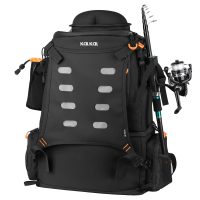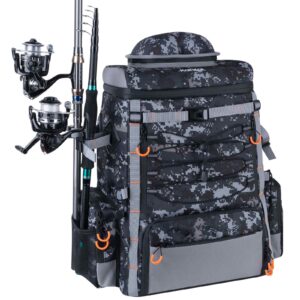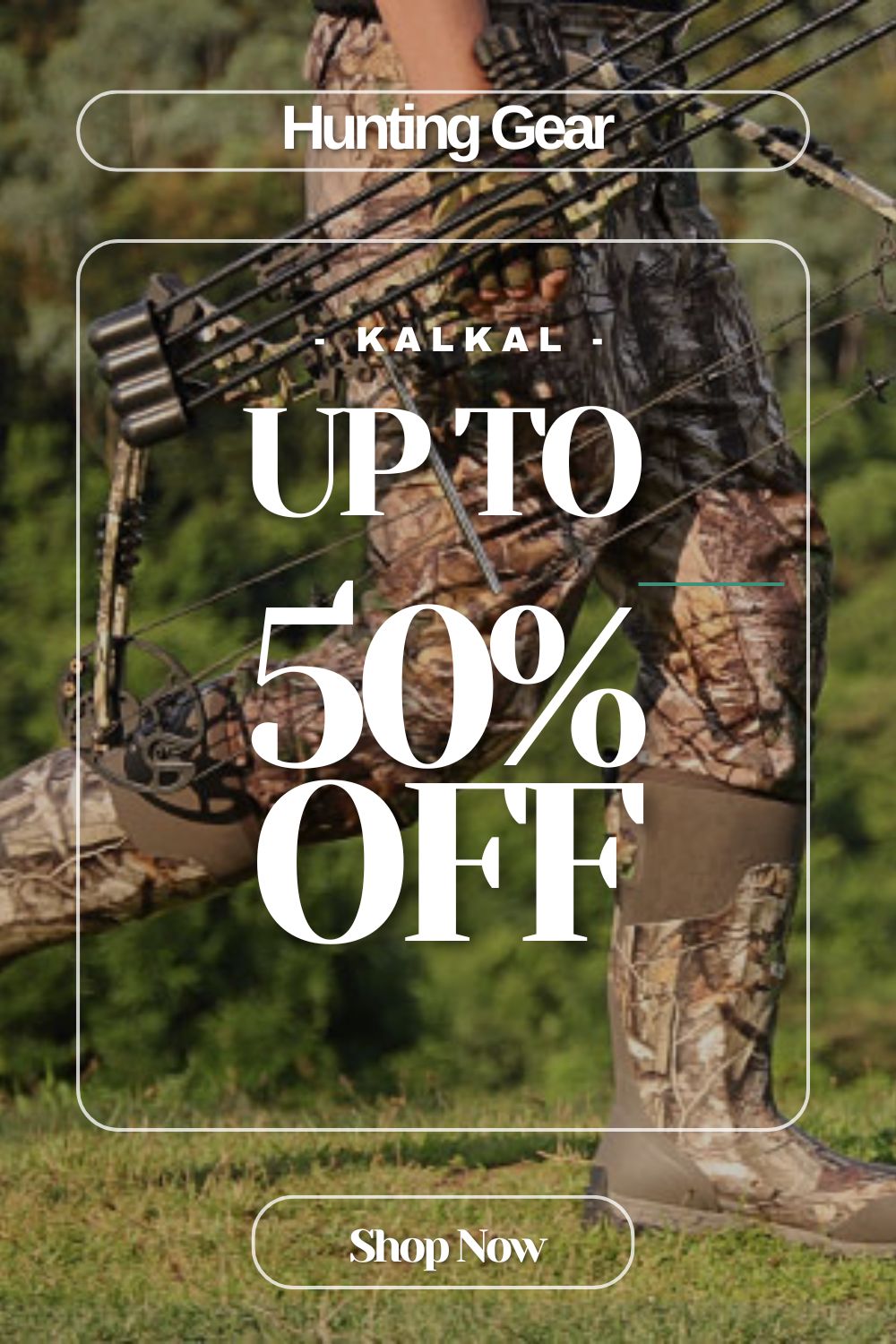There is a saying among deer hunters: if it’s brown, it’s down! Most hunters may identify mature deer due to their color and appearance. But is that true? How to tell the age of deer?
Deer aging is considered to be a complicated process. It is important to know the age of a deer to do many things, from managing the existing deer populations and when needing to hunt them, to quelling curiosity.
This guide will try to identify how a deer is aged depending on its teeth and antlers, as well as facial characteristics.
Why Is Aging Deer Important To Hunters?
Knowing the age of a deer is crucial for both hunters and wildlife managers for several reasons.
1. Informed Harvest Decisions
Aging improves the chances of selecting the right type of deer to be culled, and this is why hunters should consider aging a deer. Thus first-year deer (like fawns or yearlings) are generally left alone in properly managed hunting schemes to allow them to grow up and reproduce. Many of the older deer, especially the bucks are subjected to management or trophy hunting.
2. Population Control
Age knowledge plays an important role in ensuring that the deer population is healthy. The targeting of young classes in a given herd can also negatively affect the herd structure and hence, the reproductive rate. Frequently hunters choose stronger but older and less productive animals, thus helping in the proper population of young healthier, and reproductive deer.
3. Antler Quality and Management
Hunters who pay great attention to the trophies pay lots of attention to the antlers since they are an indicator of age. Typically, an older deer will grow bigger antlers, so knowing the age of a deer can help the hunter decide if it’s a good time to shoot the deer with a view of getting a large pair of antlers.
4. Health Indicators
Mature bucks may exhibit such demographical characteristics as emaciation, disease, or injury of different degrees. By identifying and understanding these signs, hunters will not hunt poor body health animals to reduce the health of the population.
5. Hunting Ethics and Fair Chase
A true hunter has mastered the art of estimating the age of an animal so that it will not be over-exploited by the various hunters. To those hunters who like being involved in fair chase, then, age assists in recognizing which animal deserves to be chased, thus improving the hunt.
Methods to Determine a Deer’s Age
Aging deer is not an exact science and can vary based on environmental and biological factors. Below are the primary methods used to estimate a deer’s age, along with their advantages and limitations.
1. How to Age Deer by Teeth?

Teeth examination is the most reliable way to age a deer. By inspecting the wear and replacement patterns on the molars and premolars, you can estimate age with reasonable accuracy.
Fawn teeth are sharp and small, with no wear. At 1.5 years, permanent teeth begin to emerge, and by 2.5 years, all adult teeth are present with minimal wear.
As deer age, the teeth exhibit significant wear, and the enamel thins. Environmental factors, such as diet and habitat, may accelerate or slow wear, so while accurate, even this method isn’t pinpoint. A reference chart simplifies comparisons during inspections.
2. How to Tell the Age of a Deer by Face?
Facial features can offer subtle age indicators.
Young deer (1.5 years) have slim, angular faces with short noses and a delicate overall structure. By 2.5–3.5 years, bucks show a broader face and a more prominent nose bridge.
Mature deer (4.5+ years) develop a squared jawline, elongated face, and thicker neck. Older deer (5+ years) may have a grizzled or sagging appearance, with pronounced nasal ridges.
However, facial characteristics are highly variable and depend on factors like nutrition and genetics. Observing multiple traits, such as nose length relative to the eyes and overall skull shape, increases the likelihood of accurate age estimation.
3. How to Age Deer by Antlers?
Antler size and points provide limited clues for aging deer.
Young bucks (1.5 years) typically have small, spindly antlers with 4-6 points. By 2.5–3.5 years, antlers grow thicker with more tines, influenced by health and nutrition.
Mature bucks (4.5+ years) may display impressive racks, but antler size varies with genetics, habitat quality, and mineral availability.
Some deer retain small antlers despite maturity. Additionally, antlers shed annually, resetting the growth cycle. Biologists caution against relying solely on antlers for age estimation, as their size is not consistently proportional to age. Teeth remain the most reliable method for precise aging.

4. How to Age Deer by Jaw Bones?
Examining jawbones is a detailed approach to deer aging. Fawns have smaller jawbones with fewer teeth, while older deer exhibit fully developed molars and premolars.
Wear patterns on the jawbone’s teeth provide a clear indication of age, as younger deer have sharper, less worn teeth compared to the smooth, flattened teeth of older individuals.
A jawbone reference chart can help match wear and tooth replacement stages to specific ages. While this method is highly reliable, environmental factors, such as diet, can influence wear rates. Hunters often rely on professionals for accurate jawbone aging during harvest inspections.
5. How to Age Deer on the Hoof?
Aging deer on the hoof involves observing body characteristics like muscle tone, brisket, and overall posture.
Young deer (1.5 years) have thin necks and legs that appear too long for their bodies. By 2.5 years, bucks display slight muscular development and a firmer brisket.
Mature deer (3.5–4.5 years) have filled-out bodies, larger chests, and a more muscular build. Older deer (5+ years) exhibit sagging bellies, prominent briskets, and a “blocky” look.
However, this method is subjective, as resources, health, and genetics heavily influence appearances. Even trained biologists achieve accurate aging on the hoof only about 36% of the time.

Differences In Aging Does and Bucks
There are differences in telling the age of does and bucks, although the basic methods for aging are similar. Here’s an explanation:
Differences Between Does and Bucks
- Antlers (Bucks Only): Bucks grow antlers, which can be useful for estimating the age of younger bucks. Yearling bucks typically have small spikes or minimal antler development, while older bucks exhibit more complex antlers and do not have this feature.
- Physical Build: Bucks generally have a more muscular and broader build compared to does, especially as they age. Bucks also develop a thicker neck during the rut season, which is not present in does.
- Behavioral Traits: Bucks are more solitary and territorial as they mature, while does are more likely to be seen in groups with fawns.
Specific Indicators to Tell Deer Age
- Teeth Wear and Replacement: For both does and bucks, examining the teeth is the most reliable way to determine age. Look for the replacement of milk teeth (under 1.5 years) and the wear on molars (for deer older than 2.5 years).
- Body Shape: Young Deer (1-2.5 years) have a lean body, long legs, and slim neck. Mature Deer (3-5 years) have a fuller body, and shorter appearance due to increased muscle mass. And, older Deer (6+ years) have a sagging back, prominent belly, and graying muzzle.
- Facial Features: Younger deer have shorter, sleeker faces, while older deer develop longer, more angular features. Bucks often have a more pronounced Roman nose as they age.
- Antlers (Bucks Only): Not always accurate, but bucks with more symmetrical and larger antlers are typically in their prime (3-5 years). Antler size declines in older bucks.
- Tail and Rear End: Does with fawns often have more worn or discolored tails due to nursing and raising young.
Common Misconceptions In Aging Deer
Assessing the age of deer can be tricky, and several widespread myths often lead to misconceptions. Here are some of the most prevalent ones.
1. Antler Size and Points
- Myth: The diameter and number of points from one antler decide the age of the deer.
- Reality: Antler development may give some information, nevertheless, genetics, feeding, and disease define antler formation. This study is thus based on one observation that antler size and point count are poor predictors of age especially for older deer.
2. Body Size and Weight
- Myth: Larger deer are always older.
- Reality: But as we can see, size is not always a sign of age, at least it does not work the other way around. Sources of nutrition, heredity, and physical environment greatly affect antlered deer size and shape,e and two deer of the same age group could be of a different size.
3. Facial Features
- Myth: Habits of aging indicate that the nose contour of a wild deer and the size of its eyes can reflect its age.
- Reality: Age estimation based on facial features is very inaccurate because the facial features are very changeable and not specific for age. Basic things such as genes and habitat play a very big role in determining the shapes and marks on the face of the deer apart from the ages.
Check out how our hunter discussed about deer aging and shared their experience:
The Most Accurate Way to Age a Deer
1. Toothwear and Replacement
This method involves analyzing the sequences of teeth replacement and tooth usage of the lower jaw of a deer.
Fawns are born with short-livedères babies and by 18 months have a new set of teeth. Deer are aged by the wear of their molars by grinding fibrous plants as the deer grow old since their teeth continuously wear out.
This is an acceptable method of estimation for young bucks up to about 2.5 years because the rates at which wear occurs differ due to diet and environment for older bucks.
2. Cementum Annuli Analysis
Ranking among the most sophisticated specimens of the above techniques, this technique involves analyzing a cross-section of a deer’s tooth at the thickness of a few hundredths of a millimeter.
Like annular rings in trees, these layers grow every year, thus forming visible cementum rings.
Through this, the age of the deer is told right down to the number of rings present in the finished samples.
This technique is especially beneficial when aging older deer because the level of tooth wear is less accurate. It involves laboratory tests to complete and this makes it even more elaborate and expensive but very reliable than the former.
Conclusion
The ability to properly age deer is crucial for both hunters and wildlife managers for proper utilization, management, and evaluation of a given population.
However, observing body features and antlers can be useful because methods such as the examination of teeth and cementum annuli analysis are exceptionally accurate.
All the approaches have advantages and drawbacks when used individually, nonetheless, when employed as a coordinated set, the total degree of correctness is improved. Knowing the age of a deer assists in balanced deer management and enhances the quality of a hunt for future generations.
🦌To learn more about deer, check out:
- How To Score a Deer?
- What Is a Drop Tine Deer?
- How Fast Can a Deer Run?
- What Color Can Deer See?
- When Is Rutting Season For Deer?



















Leave a reply